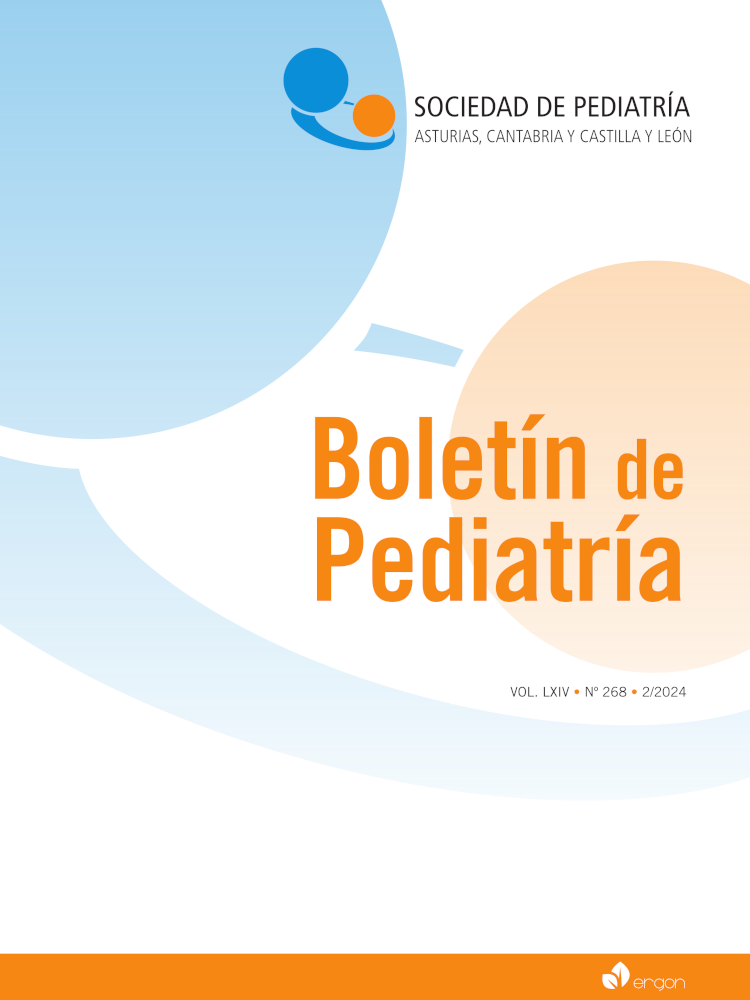Abstract
Introduction and objetives. Biological glues are substances with great adhesive power, used as an alternative for closing wounds with regular suturing, assuming a less traumatic technique, especially in pediatric patients. The study´s aim is to describe the typical characteristics and the most frequent mechanisms of cyancrylate wounds, as well as the degree of patient satisfaction.
Patients and methods. retrospective descriptive study on the characteristics of closed wounds with cyanoacrylate in pediatric patients for one year in a pediatric emergency department. Cross-sectional study by conducting a survey of parents on the degree of anxiety during the technique and the degree of satisfaction with it.
Results. 123 wounds (median age 4 years) were included. 82% of the injuries were less than 2 cm. 95% of the wounds were on the face, half of them frontal. Five required closure later with a needle. 105 parents answered the survey. Results on the degree of perceived anxiety were low/very low in 95% of respondents. The degree of satisfaction with the aesthetic result was good/very good in 90% and bad/very bad in 10%.
Conclusions. Cyanoacrylate was especially effective in wounds smaller than 2 cm in the frontal region of the face. The wounds of chin and extremity presented a more uneven aesthetic result. The level of anxiety of this procedure was low or very low, which is especially interesting, given the young age of the patients.
References
Benito Fernández J, Sánchez Echániz J, Mintegui Raso S, Váz-quez Ronco MA. Advances in pediatric emergency medicine. An Esp Pediatr. 1999; 50(1): 91-6.
Farion K, Osmond MH, Hartling L, Russell K, Klassen T, Crumley E et al.Tissue adhesives for traumatic lacerations in children and adults. Cochrane Database Syst Rev. 2002; (3): CD003326 https://doi.org/10.1002/14651858.CD003326
Inal S, Yilmaz N, Nisbet C, Güvenç T. Biochemical and histo-pathological findings of N-butyl-2-cyanoacrylate in oral surgery: an experimental study. Oral Surg Oral Med Oral Pathol Oral Radiol Endod. 2006; 102(6): e14-7. https://doi.org/10.1016/j.tripleo.2006.05.001
Malhotra V, Dayashankara Rao JK, Arya V, Sharma S, Singh S, Luthra P. Evaluating the use of octyl-2-cyanoacrylate in unila-teral cleft lip repair. Natl J Maxillofac Surg. 2016; 7(2): 153-8. https://doi.org/10.4103/0975-5950.201364
Lara-Cantón I, Sáenz-González P, García-Robles A, Mocholí-Tomás MDL, Solaz-García Á. Adhesive sutures using cyanoac-rylate in pleural drains of premature infants. An Pediatr (Engl Ed). 2020; 93(1): 52-4. https://doi.org/10.1016/j.anpedi.2019.07.005
Koonce SL, Eck DL, Shaddix KK, Perdikis G. A prospective randomized controlled trial comparing N-butyl-2 cyanoacrylate (Histoacryl), octyl cyanoacrylate (Dermabond), and subcuticular suture for closure of surgical incisions. Ann Plast Surg. 2015; 74(1): 107-10. https://doi.org/10.1097/SAP.0b013e318289856f
Castañón García-Alix M, Sancho Vendrell MA, Parri Ferrandis FJ, San Vicente Vela B, García Aparicio L, Tarrado Castellarnau X, et al. Utilidad del adhesivo tisular 2-octil cianoacrilato en cirugía pediátrica. An Pediatr (Barc). 2003; 59(6): 548-51. https://doi.org/10.1016/S1695-4033(03)78778-5

This work is licensed under a Creative Commons Attribution-NonCommercial 4.0 International License.
Copyright (c) 2024 Boletín de Pediatría
